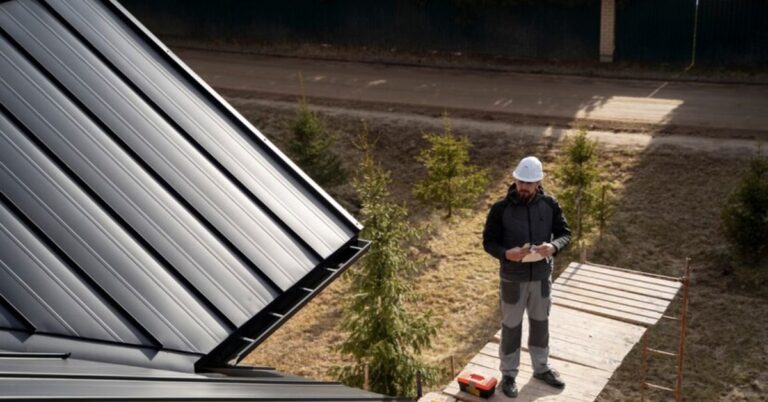When it comes to ensuring the longevity and safety of your home, a reliable roof is indispensable. Beyond offering protection from weather elements, a well-maintained roof adds aesthetic value and boosts property resale potential. Whether you’re considering an upgrade, repair, or complete roof replacement, understanding your options and needs is critical. In this guide, we’ll delve into roofing essentials, the types of materials available, and tips for maintaining a durable roof.
Understanding the Basics of Residential Roofing
Before diving into material choices or maintenance routines, it’s essential to grasp the foundational aspects of a roofing system. A residential roof isn’t just the top layer visible from the street—it’s a multi-layered system designed to work in harmony.
Components of a Residential Roof
- Shingles or Tiles
These form the outermost layer and offer protection against environmental factors. - Underlayment
Beneath the shingles, the underlayment provides a secondary barrier against water and debris. - Flashing
Flashing prevents water from seeping through vulnerable areas, such as chimneys and skylights. - Ventilation
Proper ventilation ensures the roof stays free from moisture build-up, which could lead to mold or rot.
Understanding these components can help homeowners appreciate the complexities involved in roof installation or repair.
Choosing the Best Roofing Material for Your Home
Selecting the right roofing material depends on various factors, including climate, budget, and aesthetic preferences. Each option offers unique benefits and challenges.
Asphalt Shingles
Asphalt shingles are among the most popular choices for residential roofs. They’re cost-effective, durable, and available in a wide range of colors and styles. However, they may not last as long in areas with extreme weather conditions.
Metal Roofing
Known for its longevity, metal roofing can withstand harsh elements and requires minimal maintenance. While the initial cost is higher, its durability often makes it a cost-effective option over time.
Tile Roofing
For homes in warmer climates, tile roofing provides excellent thermal insulation and a timeless aesthetic. However, tiles are heavier and may require reinforced roofing structures.
Wood Shingles or Shakes
Wood shingles add a rustic charm to any home. They are environmentally friendly but require more maintenance than other materials to prevent moisture damage.
Factors to Consider Before Starting a Roofing Project
A roofing project is a significant investment, so thorough preparation is key. Taking the time to evaluate your needs and plan accordingly can save you time, money, and stress.
Assessing Roof Condition
Before committing to a replacement, have your roof inspected by a professional. They can identify issues like leaks, missing shingles, or structural damage.
Understanding Local Building Codes
Roofing projects often need to comply with local regulations. Check with local authorities to ensure your project meets all requirements.
Budgeting and Financing Options
Roofing projects can be costly. Some companies offer financing options to make the investment more manageable. Be sure to get a clear estimate and inquire about warranties for added peace of mind.
Maintenance Tips to Prolong Your Roof’s Life
Regular maintenance can significantly extend the life of your roof, regardless of the material you’ve chosen. Here’s a checklist to keep your roof in optimal condition.
Routine Inspections
Schedule inspections at least twice a year to catch potential issues early. Pay attention to areas around vents, chimneys, and gutters.
Cleaning Gutters
Clogged gutters can cause water to pool on your roof, leading to leaks or damage. Regularly clear gutters of leaves and debris.
Addressing Repairs Promptly
Small issues like missing shingles or minor leaks can escalate if left unattended. Addressing them immediately can prevent more extensive (and expensive) damage.
Trimming Overhanging Branches
Trees can pose a risk to your roof, especially during storms. Keep branches trimmed to prevent damage from falling limbs or debris.
When to Call a Professional
While DIY solutions might seem tempting, certain roofing issues require professional expertise. Knowing when to seek professional help can save you time and prevent costly mistakes.
Signs It’s Time for a Replacement
- Persistent leaks despite repairs
- Sagging areas in the roof structure
- Visible cracks or severe weather damage
For homeowners in Wisconsin, home roofing experts can provide trusted advice and services tailored to your needs.
Benefits of Hiring Professionals
- Access to quality materials
- Expertise in handling complex installations
- Warranties for added peace of mind
Investing in a professional ensures your roof is safe, durable, and long-lasting.
Conclusion
Your roof is an essential part of your home’s structure, offering protection and enhancing its curb appeal. By understanding roofing basics, choosing the right materials, and following a consistent maintenance routine, you can ensure your home remains safe and beautiful for years to come.
For more detailed advice or assistance with your roofing project, consult experienced contractors who can guide you every step of the way.

